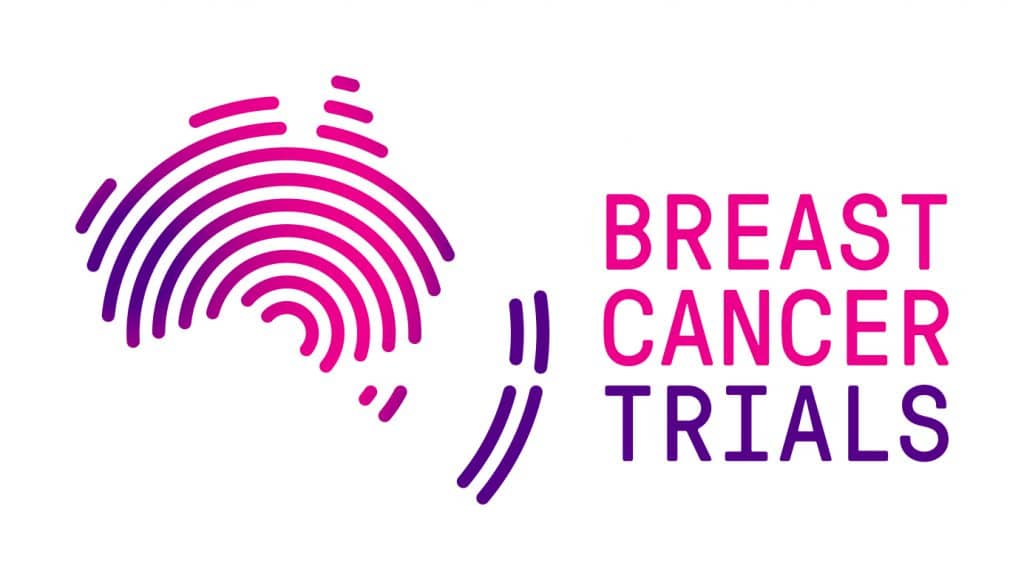What Is Triple Negative Breast Cancer (TNBC)?
Triple negative breast cancer is a type of breast cancer that does not have the three most common type of receptors known to make most breast cancers grow – oestrogen receptor (ER), progesterone receptor (PR) and HER2 (human epidermal growth factor receptor 2). Triple negative breast cancer accounts for approximately 15% of all breast cancers.
Triple negative breast cancer is a more aggressive cancer that usually occurs at an earlier age. It has a greater chance of developing into a metastatic stage and has poorer clinical outcomes as shown by higher relapse rates and lower survival rates. Because it does not have receptors that can be targeted by medications such as hormone- and HER2-blocking drugs, it has fewer treatment options available.
On this page, we’ll look at some of the symptoms of triple negative breast cancer, as well as treatment and prevention options.
What Are The Symptoms Of Triple Negative Breast Cancer?
The symptoms of TNBC are the same as any other type of breast cancer. Symptoms can include:
- New lump in the breast, armpit area or around the collarbone
- Change in breast size or shape
- Changes to the nipple, such as sores or crusting, an ulcer or inverted nipple
- Clear or bloody nipple discharge
- Changes to the skin including redness, puckering or dimpling (an ‘orange peel’ appearance)
- Breast tenderness or pain
Learn more about the symptoms of breast cancer.
Who Is At Risk Of Developing Triple Negative Breast Cancer?
No one has a definitive answer on what causes breast cancer. Anyone can be diagnosed with triple negative breast cancer and should be aware of their own personal risk factors. You can use the online iPrevent tool to better understand your breast cancer risk and act on it.
There are a number of known risk factors for triple negative breast cancer including:
- BRCA Mutations – A BRCA1 gene mutation is associated with a higher risk of triple negative breast cancer. However, most triple negative breast cancers are not caused by a BRCA gene mutation. If you have a strong family history of breast cancer, you may wish to consider genetic testing. This is something to discuss with your doctor.
- Pre-Menopausal Women – While the average age of first being diagnosed with breast cancer in Australia is 61, triple negative breast cancer occurs more often in patients who are pre-menopausal or under 50 years of age. The cause of triple negative breast cancer in this young age group is not yet completely known. However, it could be due to breasts of younger women in their childbearing and breastfeeding years is of a different composition to the breast of an older women who has been menopausal for a long time.
- African American and African Women – Triple negative breast cancer is more likely to be diagnosed in African American and African women compared with white or Hispanic women. This is thought to be due to genes or mutations that pre-dispose this group of women, particularly pre-menopausal women, to triple negative breast cancer.
Treatment Of Triple Negative Breast Cancer
Standard treatment of early stage triple negative breast cancer (stage 1 and stage 2) typically includes the following:
- Surgery
- Chemotherapy
- Usually a course of radiotherapy
Often chemotherapy treatment is given prior to breast surgery (neoadjuvant chemotherapy), as it can effectively reduce the size of the breast cancer while providing useful information about the effectiveness of the treatment being given.
Prevention of Triple Negative Breast Cancer
For those who have the BRCA1 or BRCA2 gene mutation, there are important considerations for the prevention of breast cancer. Women who carry BRCA1 or BRCA2 gene mutations have an approximate 70% risk of developing breast cancer and up to 40% risk of developing ovarian cancer over their lifetimes.
There are preventative strategies for those with this genetic mutations which include protective surgery via the removal of both healthy breasts and hormonal therapy medicines such as tamoxifen or an aromatase inhibitor. Removal of the ovaries and fallopian tubes helps reduce the risk of both ovarian and breast cancer. The breast cancer benefit is due to a reduction in the levels of oestrogen in the body.
There is no definitive way to prevent breast cancer, however there are a number of risk factors that you can manage to reduce the likelihood of future breast cancer. This includes maintaining a healthy body weight, not smoking and engaging in regular exercise. You can read about breast cancer prevention and how to reduce your risk here.
In one of our recent free online Q&A’s moderated by Author and Journalist, Annabel Crabb, our panel of experts discussed Triple Negative Breast Cancer, including the latest in research, treatments and genetics relating to this disease. If you missed out on this Q&A, you can access the recording below.
What is the Survival Rate of Triple Negative Breast Cancer
Whilst there are no statistics on the specific survival rates for triple negative breast cancer, the relative 5-year survival rate for breast cancer is 92%. This means that those who have breast cancer are, on average, 92% as likely as those who don’t have the disease to live for at least 5 years after their diagnosis.
The survival rate is an estimate across the population, and an individual’s chance of survival is dependent on their specific characteristics and the nature of the tumour, such as the stage of the breast cancer at diagnosis, the age, gender and the subtype of the breast cancer (ER+, HER2+ or triple negative breast cancer).
The 5-year survival rate for Stage 1 (early) breast cancer is, on average, 100% and Stage 2 is 95%. For locally advanced cancers (known as Stage 3) the survival rate is 81%, while the 5-year survival rate for Stage 4 (metastatic breast cancer) is significantly lower at 32%.
Clinical Trials Research on Triple Negative Breast Cancer
Primary results of the CHARIOT clinical trial were presented at the American Society of Clinical Oncology (ASCO) international conference in 2022. This was a world-first Australian clinical trial developed by Breast Cancer Trials (BCT) researchers that was open to both women and men diagnosed with triple negative early breast cancer. The trial recruited 34 patients at eight participating institutions throughout Australia.
The purpose of the CHARIOT clinical trial was to see if using two immunotherapy drugs (nivolumab and ipilimumab) together with standard chemotherapy (paclitaxel) before surgery, was safe and effective and could stimulate the body’s immune system to kill the cancer cells. And, if continuing treatment with one of these drugs (nivolumab) after surgery can keep the immune system active to eradicate any residual cancer cells.
The trial found that in patients with early-stage triple negative breast cancer who did not respond to standard neoadjuvant chemotherapy, the addition of nivolumab and ipilimumab resulted in a promising response rate with 24% of participants achieving a complete disappearance of their cancer within the breast and lymph nodes by the time of surgery. This treatment was able to be delivered safely, with some patients experiencing known and expected side effects of immunotherapy. These side effects were able to be successfully treated.
Professor Sherene Loi is the Study Chair of the CHARIOT clinical trial, Board Director at BCT and Head of the Translational Breast Cancer Genomics and Therapeutics Laboratory at the Peter MacCallum Cancer Centre. She says longer term follow up is needed to help determine the overall effectiveness of this treatment approach and the benefits to patients.
The Neo-N clinical trial aims to identify more effective treatment options for early stage triple negative breast cancer patients, by combining an immunotherapy drug (nivolumab) together with chemotherapy (paclitaxel and carboplatin) prior to surgery.
Often cancers can avoid detection and attached from the body’s immune system. This study will help us understand if nivolumab given for a short period on its own, before commencing treatment with chemotherapy, can effectively activate the body’s anti-cancer immune response and contribute to better outcomes for triple negative breast cancer patients. Patients who respond well to this treatment may be able to avoid the short and -long-term effects of anthracycline-based chemotherapy that would often be used for this type of breast cancer.
Results from Neo-N were announced at the end of 2023 and more information about this trial is available in this video.
If you would like to support the life-saving research program of Breast Cancer Trials by making a donation, click here.
Your donation will help us to conduct research into triple negative breast cancer, like the studies described above, and provide more treatment options to patients.
Long-Term Triple Negative Breast Cancer Survivors
Diane Barker was diagnosed with locally advanced triple negative breast cancer in December 2020, at just 44 years of age.
“I do remember feeling incredibly tired, like more tired than I had ever felt in my entire life. And yes, I’ve got a busy job, but I just thought maybe something was going on. And actually, my GP and I were about to start a process of, you know, a sleep clinic and doing a sleep study to see what was happening,” Diane said.
“But I was also, going through a process of having regular mammograms and ultrasounds, because my mum had had breast cancer when she was 59. So, when I turned 40, my GP said we should start doing this for you. So, I’d been doing that for a few years, and everything was fine.”
“I went to my regular scan and that process with the mammogram and the ultrasound and some red flags started appearing. I thought that maybe something might be going on when the technician called the radiographer into the room to have a look herself and I could just see the look of concern that she couldn’t entirely mask on her face. I had to go back for a biopsy, which is when I started to really think that maybe something serious was going on.”
“Then when I got the result from my GP, I was in the middle of a meeting at work and she said, I’m afraid it’s cancer. That was when everything changed for me. It was quite shocking. I was preparing myself for that news, but really nothing can prepare you for news like that. It’s devastating. It’s absolutely devastating.”
Learn more about Diane’s story here.
Early Detection is Key to Treating TNBC
Triple negative breast cancer tends to be a more aggressive disease than some other breast cancers which means it grows faster, and has fewer effective treatment options. Triple negative breast cancer is also more likely to recur within two to three years of diagnosis, as opposed to 10 to 15 years for those with oestrogen receptor – positive breast cancer. Early detection is therefore vital. If you have a strong family history, you should consider discussing your prevention and testing options with your doctor.
Breast Cancer Trials is a unique collaboration of researchers, trial participants and YOU, our valued supporters working together to save and improve the lives of every person affected by breast cancer. Help find the newest breakthrough in breast cancer research.
HELP FIND THE NEWEST BREAKTHROUGH IN BREAST CANCER RESEARCH
Q&A: Triple Negative Breast Cancer
Find out more about the latest in research, treatments and genetics relating to Triple Negative Breast Cancer.



